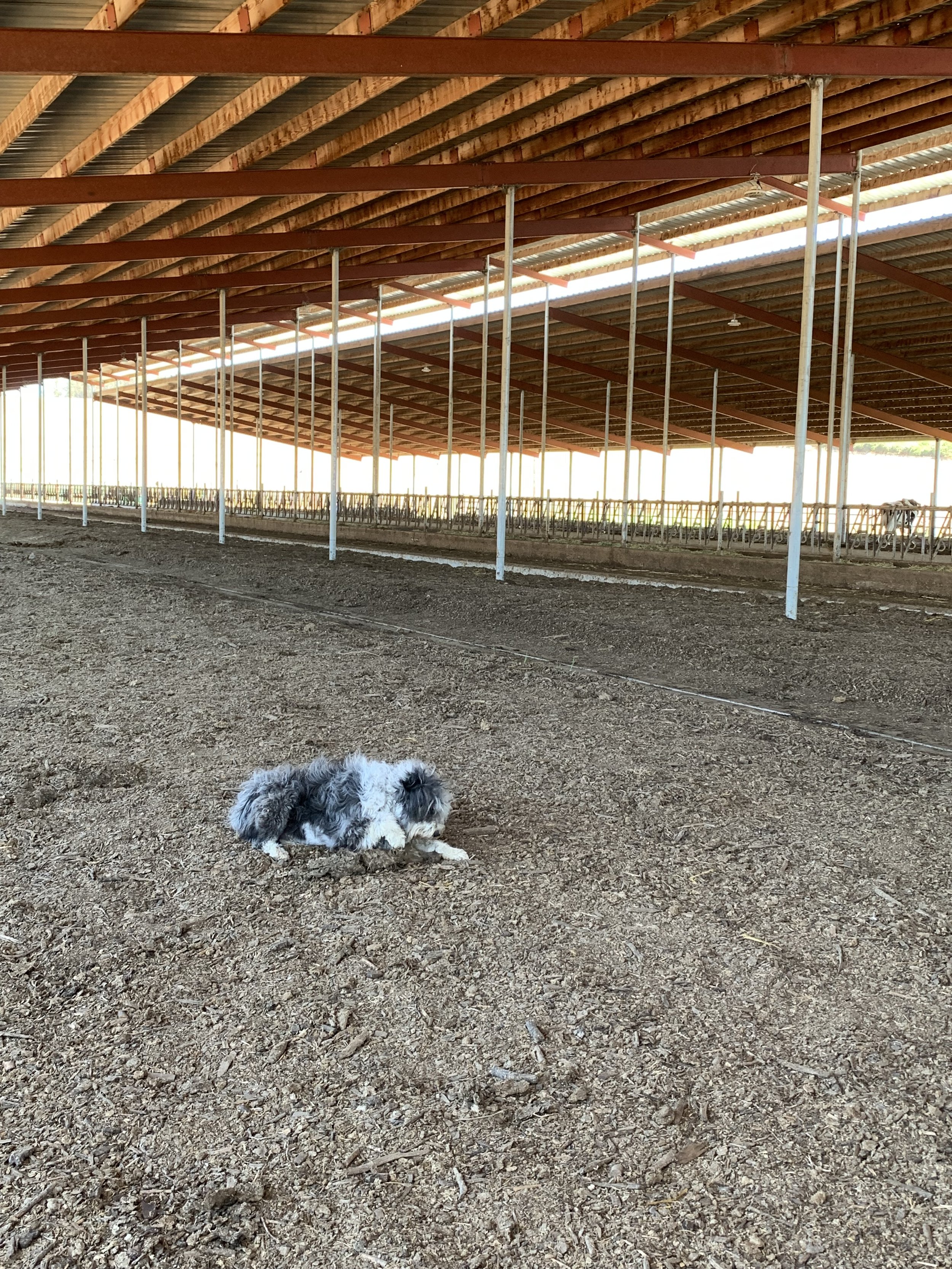The Triple C Dairy Compost Barn and Solid Separation Project received California Climate Investments funding in 2019 through the Alternative Manure Management Program (AMMP). Triple C Ranch, an organic dairy located in Sonoma County, used the funding to install a new compost bedded pack barn to house a portion of the herd during winter months, automate scrape collection of manure from barn alleyways, and add a solid-liquid separator that would reduce the amount of collected manure entering anaerobic storage. Collected manure was composted and re-used for bedding and fertilizer. By reducing the amount of manure entering a liquid environment and removing the need for manual scraping of alleyways, the project reduced both diesel and methane emissions. The project, which was completed in spring of 2022, also improved pasture management by providing more housing for the herd.
Can you share with us your name and your role on this project?
Robert J Camozzi, 4th generation dairy farmer and owner/operator of Triple C Ranch.
Owner and operator of Triple C Dairy, Bob Camozzi.
Tell us about the area where your dairy operates in Sonoma County. How has the community supported your dairy and other small, local farms? The area has a number of small farms but one of its strengths is that it also has a lot of processing capability – our milk travels just a few miles down the road for processing at Bellwether Farms. This is a great benefit, as the community needs access to local organic products.
We’d love to hear more about the project. What did it do? What benefits did the project provide for your dairy?
The project had multiple components: construction of a new compost bedded pack barn; automated cable scrapers that would replace use of a diesel-fueled skid steer for cleaning concrete lanes in the new and existing barns; a reception pit and screw press separator to process scraped manure and separate solids from liquids. The results help improve water quality, air quality, the efficiency of the operation, and produces a quality soil amendment. The separator keeps more manure out of storage ponds, allowing the liquid to be used for sprinkler irrigation instead of hauling slurry to fields. The composted manure can be used on our fields and hauled up to our other ranch that grows alfalfa, essentially replacing the compost we would have had to buy previously. It can also be used as a source of bedding so we can move away from buying sand. The automated chain scrapers have led to a reduction in diesel use as well as labor – personnel can be redirected to other activities. The additional housing for the herd during winter months allows us to better manage pastures and reduces the amount of potential runoff and exposure of manure to rainwater.
What impacts do you hope to see in your community as a result of this project?
We hope the project leads to people recognizing that we are doing our part to prevent global warming and improve environmental stewardship through reducing our fossil fuel use and composting. We are excited about the barn and its innovative management and are happy to host tours for visitors and those in the community – other dairy producers in the area have already asked about our experience with the AMMP grant, and seeing implemented practices may encourage others to pursue them as well.
Compost bedded pack barn installed as part of the AMMP project.
What has been challenging in carrying out the project, and what have you learned from those challenges that could be useful for others to know?
One of the lessons learned is to keep the full costs of a project in mind – don’t go into it thinking everything will be covered. There are upfront costs, the wait time for reimbursement, and then maintenance costs after implementation. It’s important to be practical and think through who can service the equipment, and to recognize that you can get some state-of-the-art equipment but ultimately all equipment will need maintenance.
What are some elements of the project you think others should consider incorporating into their projects?
This is hard to say because every project is so unique to each dairy.
New screw press solid separator and manure collection pit installed as part of the AMMP project.
What advice do you have for others applying for funds? What have you learned from the application process that would be useful for others to know?
Factor in upfront costs; get your bids and complete your project in a timely manner so it is done within the grant time frame and costs of equipment and labor don’t increase significantly past the original bids.
Any closing thoughts to leave us with on why you chose to pursue this grant and what it means for you and the dairy?
I pursued this project because I want to pass the dairy on to the next generation. In order to do that, infrastructure is necessary and part of that is modernizing the dairy. Dairies are not always seen in a good light, but we want to do our part – we are environmentalists too. California is investing a lot to try and help, and we felt an AMMP project was a good opportunity to modernize the dairy and bring it to the next level of management for protecting the environment. It is putting ourselves in a better position for the future. We don’t always know how things will work out, but I was in the new barn the other day thinking we couldn’t run the dairy today without this – a lot of cows were calving, and they were dry and comfortable under cover instead of out in the rain. It has made a huge difference.




